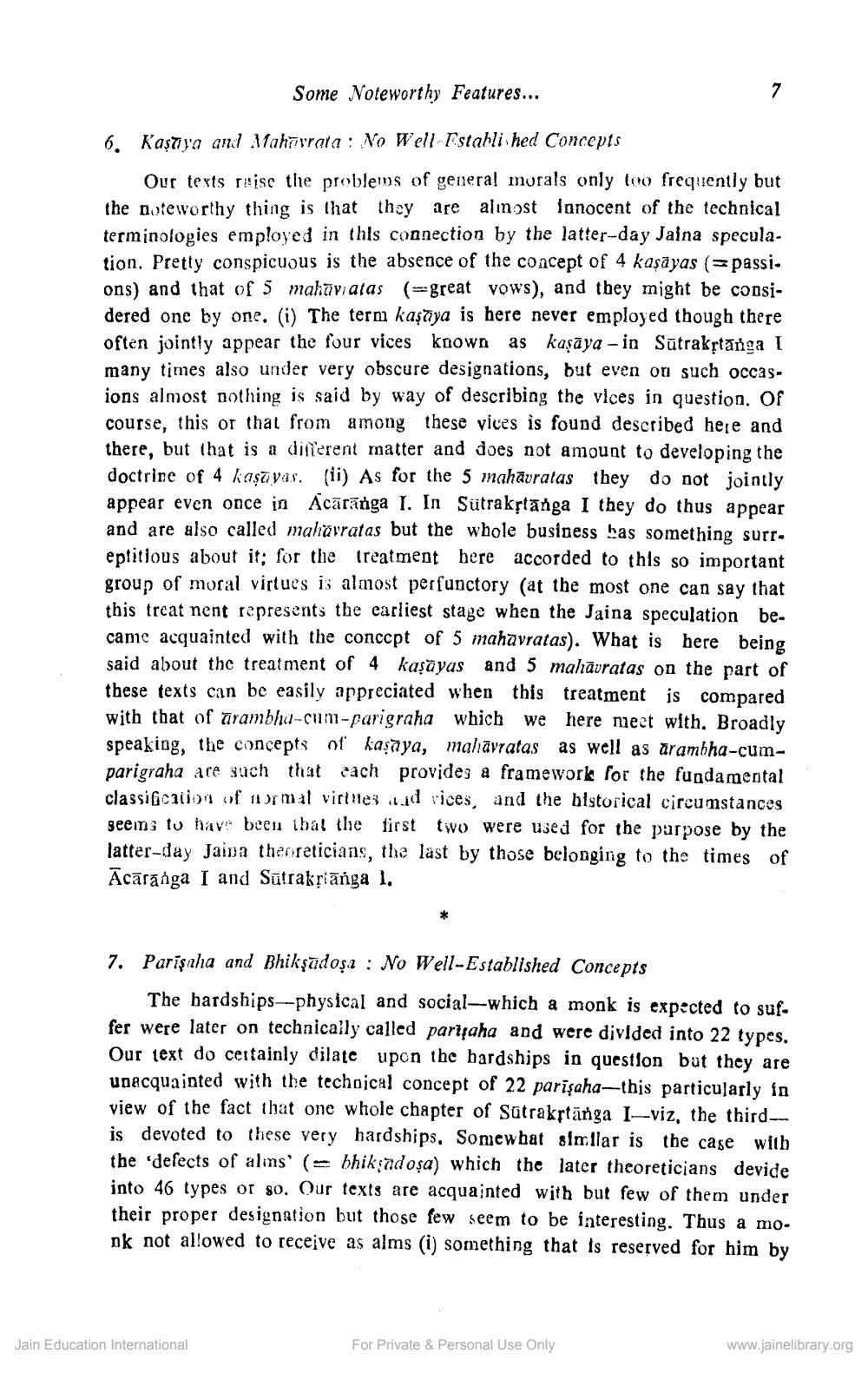________________
Some Noteworthy Features...
6. Kaş y'a and Jahivrata : No Well Established Concepts
Our texts raise the problems of general morals only too frequently but the noteworthy thing is that they are alınost innocent of the technical terminologies employed in this connection by the latter-day Jaina speculation. Pretty conspicuous is the absence of the concept of 4 kaşayas (=passi. ons) and that of 5 mahay atas (=great vows), and they might be considered one by one. (i) The term kaşāya is here never employed though there often jointly appear the four vices kaown as kaşāya - in Sūtrakrtanga I many times also under very obscure designations, but even on such occasions almost nothing is said by way of describing the vices in question. Of course, this or that from among these vices is found described here and there, but that is a different matter and does not amount to developing the doctrine of 4 kaşayas, (ii) As for the 5 mahāvratas they do not jointly appear even once in Acārānga I. In Sutrakstānga I they do thus appear and are also called mahavratas but the whole business has something surr. eptitious about it; for the treatment here accorded to this so important group of moral virtues is almost perfunctory (at the most one can say that this treat nent represents the earliest stage when the Jaina speculation became acquainted with the concept of 5 mahavratas). What is here being said about the treatment of 4 kaşāyas and 5 mahāvratas on the part of these texts can be easily appreciated when this treatment is compared with that of arambhu-cum-parigraha which we here mect with, Broadly speaking, the concepts of kasaya, mahāratas as well as ārambha-cumparigraha are such that each provides a framework for the fundamental classification of imrmal viriles ud vices, and the historical circumstances seems tu have been that the first two were used for the purpose by the latter-day Jaina theoreticians, the last by those belonging to the times of Ācāranga I and Sūtrakrtānga I.
7. Parīşaha and Bhikṣādoşa : No Well-Established Concepts
The hardships---physical and social--which a monk is expected to suffer were later on technically called parişaha and were divided into 22 types. Our text do certainly dilate upon the hardships in question but they are unacquainted with the techoical concept of 22 parişaha--this particularly in view of the fact that one whole chapter of Sutrakrtänga 1-viz, the thirdis devoted to these very hardships, Somewhat similar is the case with the defects of alms' (= bhiksadoșa) which the later theoreticians devide into 46 types or so. Our texts are acquainted with but few of them under their proper designation but those few seem to be interesting. Thus a monk not allowed to receive as alms (i) something that is reserved for him by
Jain Education International
For Private & Personal Use Only
www.jainelibrary.org




